Spyderco McBee review will be unlike other Spyderco knives because it is one of a kind and made by a custom knife maker, Jonathan McNees in collaboration with Spyderco. Spyderco has worked with various knife designers in the past such as Rick Hinderer, Snody, Michael Burch, Michael Walker, Edd Schempp, Bob Lum and Frank Centofante, among many others. Spyderco has collaborated with over 30 different custom knife makers and sold their knives under the Spyderco name.
Similarly, Spyderco also has factories in Taiwan, Japan, China, US, and Italy with worldwide distribution networks.
It is also worth noting that Spyderco launches several models and versions of a single type of knife. They usually differ in blade and handle material, size composition of the blade and handle, weight, and finishing, etc. However, Spyderco McBee is special because there are no variations in it. It is a singular knife and available as it is. However, its supply is limited because it is custom made. Hence, it may not be easily available.
Spyderco McBee Designer
Jonathan McNees is an ex US Marine veteran and very outdoorsy. He has been crafting knives since 2008. He said in an interview that he loved knives his whole life and is thrilled to make them every day. Because of his outdoorsy nature, he mostly creates knives for other outdoorsy people for tactical use.
Jonathan McNees
All of McNees knives are manufactured in the US, since the McBee was a collaboration with Spyderco, it was made in Taiwan. The performance-machined line that he uses to design knives are made to last a lifetime. It is one of the things about him that differentiates him from other knife makers. And the McBee is also shockingly different from other collaborations with custom knife makers. Other than the patented Spyder-Hole and the relatively similar knife components, the design is entirely different. It also places the McBee on a totally different spectrum.
Because of McNees’ lifetime of using knives in the field and being a knife enthusiast, he is able to get into the technical specifications and design elements that people in the field look for. That was the inspiration behind producing Spyderco McBee. It is his Killer-B folding knife, excellent for everyday carry.
Spyderco McBee Review
The design of Spyderco McBee proves that functionality and design supersedes size. The Spyderco McBee features a Saber grind with Wharncliffe blade from CTS XHP stainless steel. The knife’s scalloped spine shows impressive cutting strength and thin precision. Despite its size, it offers one hand opening thumb hole. The blade is stonewash-finished accompanied by precision-machined solid titanium scales. The rear side of the scales have obvious skeletonized holes, with the reverse side of the scales forming the Reeve Integral Lock (R.I.L). Both sides of the scales are immaculately finished by McNees’ signature lock recess stippling and the pivot pin screw heads. The stainless steel hourglass clip is positioned on the right-side with tip-up carry and lined lanyard hole for attachment of fobs and lanyards.
Spyderco McBee Prices |
||
|---|---|---|
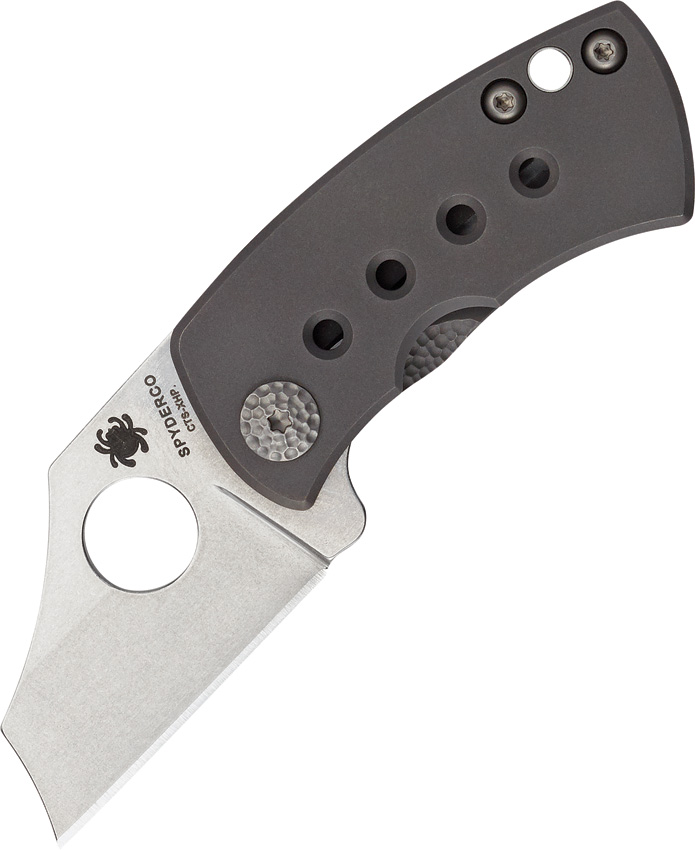 |
 |
Check Price at Blade HQ |
 |
Check Price at Chicago Knife Works | |
Key Specifications of Spyderco McBee
First Impression of Spyderco McBee
The very first and obvious impression of this knife is the size. Even Spyderco Dragonfly seems like a giant knife in comparison to it, even though it is also a smaller knife. However, we are not going to judge the McBee based on its size alone. We especially like the steel blade and handle material, along with its ergonomics.
It is called the ‘honeycomb killer-B’ special edition knife from McNees custom knives. Hence the name McBee. That is also another enticing component of the knife, along with the fact that it is especially designed for outdoor adventurers and knife enthusiasts.
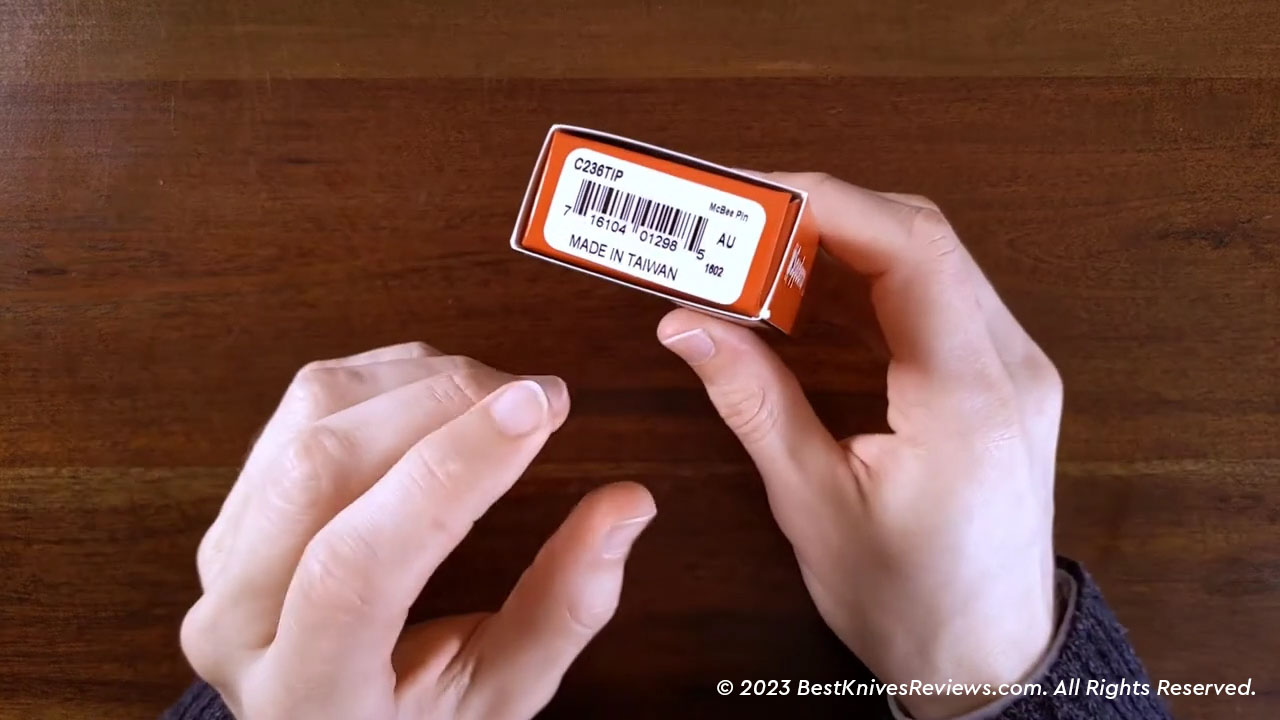
When I ordered it, it came in the standard Spyderco box. The box mentioned its specs and the place of origin as Taiwan.
As you can see, the finishing and look of the knife is quite sleek and impressive right out of the box. The jimping at the bottom of the blade right off the thumb hole was a good addition, since it enables firm handling and gripping of the tiny knife.
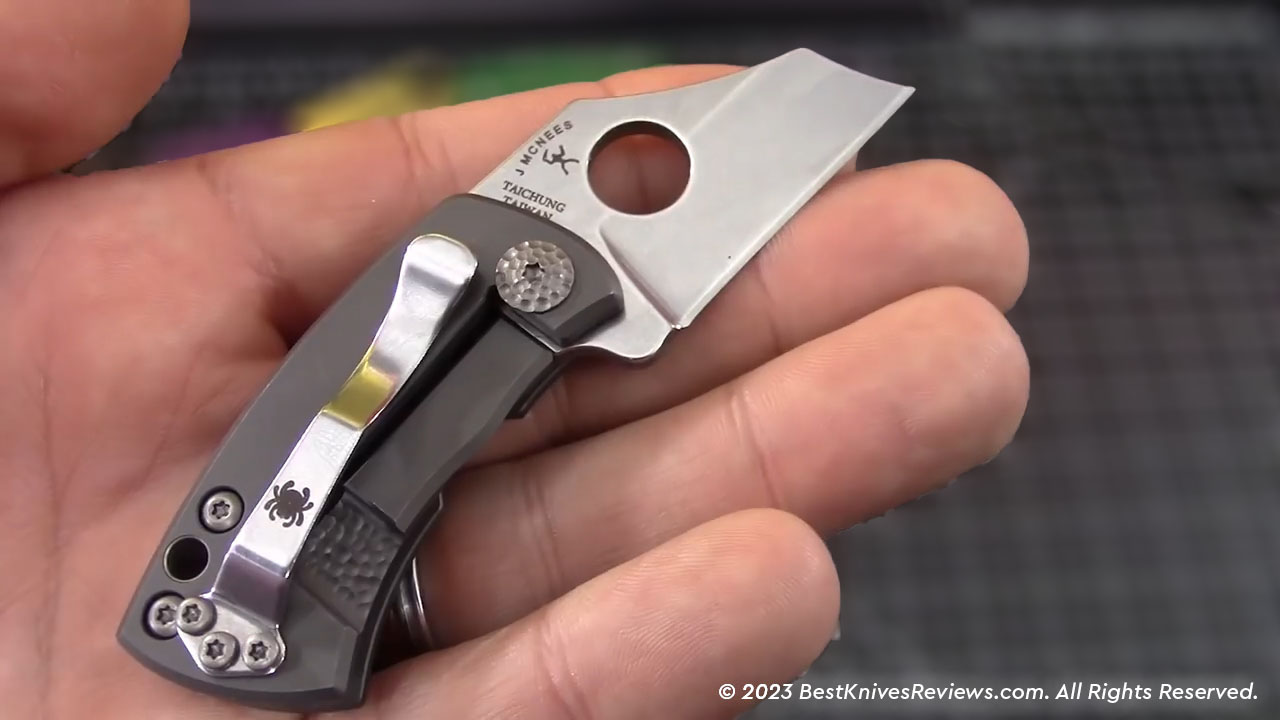
I also liked how the pocket clip fit onto the handle. The fact that it covers almost the entire handle is not an issue, since it is perfectly placed and will not get in the way of knife action. However, if it was equidistant from the pivot, it would provide enough area to clip the knife. But the good thing is that you can get anodized second and third market pocket clip variations for McBee. It also comes in different engraving patterns. However, I like the original pattern, as it is sturdy and well-textured.
Moreover, when I opened knife, I was able to do it with one right action, and it was a smooth and easy operation. However, the finger flick was not so easy, as the thumb hole was a bit obscure. But with a little practice, you may be able to get the hold of it.
It was mostly because the denture was not particularly strong, and it couldn’t fit the finger inside the hole to open the blade all the way through. It could be a turn off for regular Spyderco users, especially for left-handed users.
The additional jimping, the result of the added efforts by McNees and Spyderco adds traction to the knife. That makes it a front-flipper. Without the jimping, you would not be able to open the knife with your index finger. It also acts as a comfortable hold for precision cuts, in addition to the knife’s cutting edge, extending up to 1.49”. It is enough for edge retention and punching holes with the knife.
Overall, it gives the impression of a tiny box cutting and opening knife. It looks like it will be ideal for cutting open cardboard boxes.
The Blade of Spyderco McBee
The belly of McBee’s blade is its most distinguishable component. Compared to other Spyderco knives, McBee’s blade may be of shorter length, but it’s wider, and provides greater cutting edge. The saber grind further provides the knife an edge with the bevel starting from the mid-point of the blade instead of the spine. It enables tough EDC tasks with its strong and heavy-duty grind. It also allows the McBee to carry out tactical tasks.
The CTS XHP stainless steel blade is another thing that places McBee at the higher performance level. It contains high components of carbon and chromium, which add to the hardness of the steel blade. Other components include vanadium, silicon, nickel, manganese, iron, and molybdenum. Manufactured by Carpenter under the CTS steel series, it is air-hardened and processed under the powder metallurgy for high edge retention and corrosion resistance.
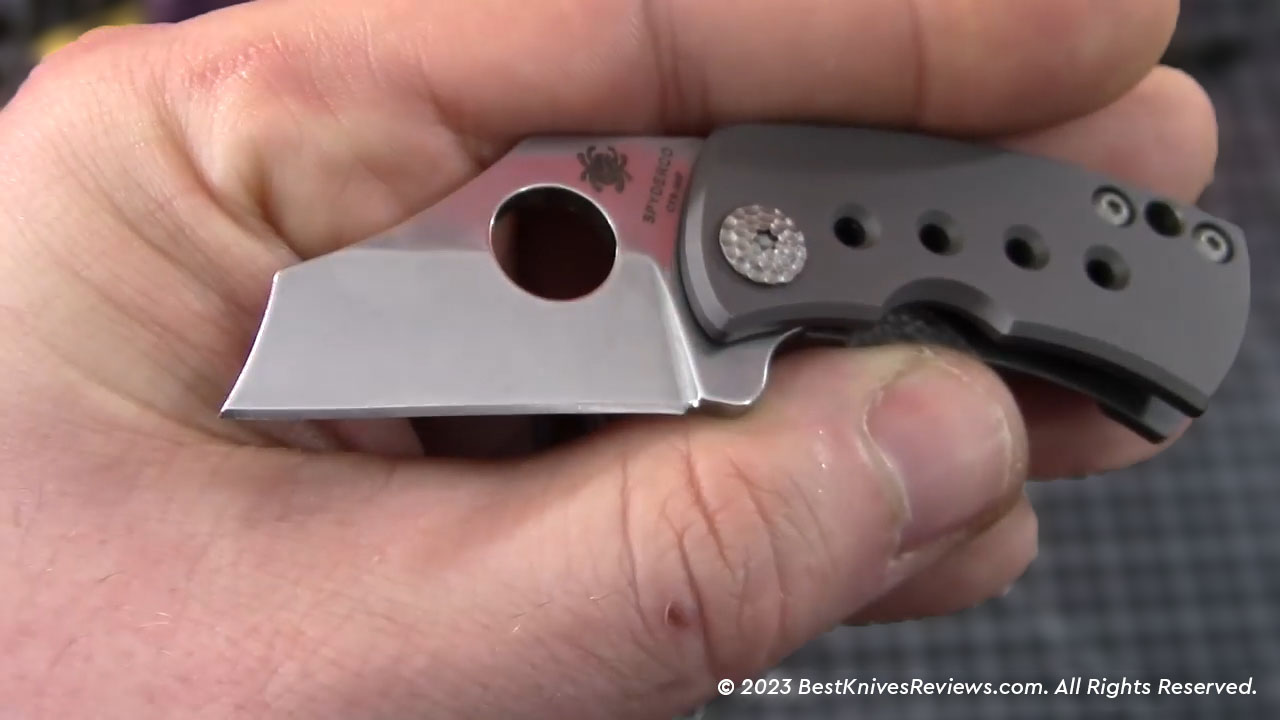
It has a good balance between hardness and toughness. Otherwise, too much hardness may make the blade brittle, and harder to sharpen. For a knife of McBee’s size, balance is crucial between the blade, the handle, and how much extreme resistance it can take.
The blade is stonewashed without any visible scratches. It helps prolong the outlook of the blade and is a popular finishing choice for outdoor tasks knives. Since the stonewashing already enables a rugged, textured, and worn-out look, you do not have to worry about the look. It also means that it can retain its original texture over time.
The Wharncliffe blade shape with a flat-cutting edge does not make it an all-purpose blade, but for specific use. This blade shape is uniquely ideal for outdoor cutting tasks. The width of the blade extending straight from the handle and meeting at the curving point also adds to its edge retention, toughness and durability. It also makes the knife not prone to breaking or accidental stabbing.
The Handle and Ergonomics of Spyderco McBee
The titanium handle scales is another thing that makes the McBee tough. It is more durable than aluminum, and hence costs more. At the same time, it is lightweight metal alloy, but a bit heavier than other lightweight alloys. That is a good thing because for a knife of McBee’s size, it needs some weight for increased strength and heft.
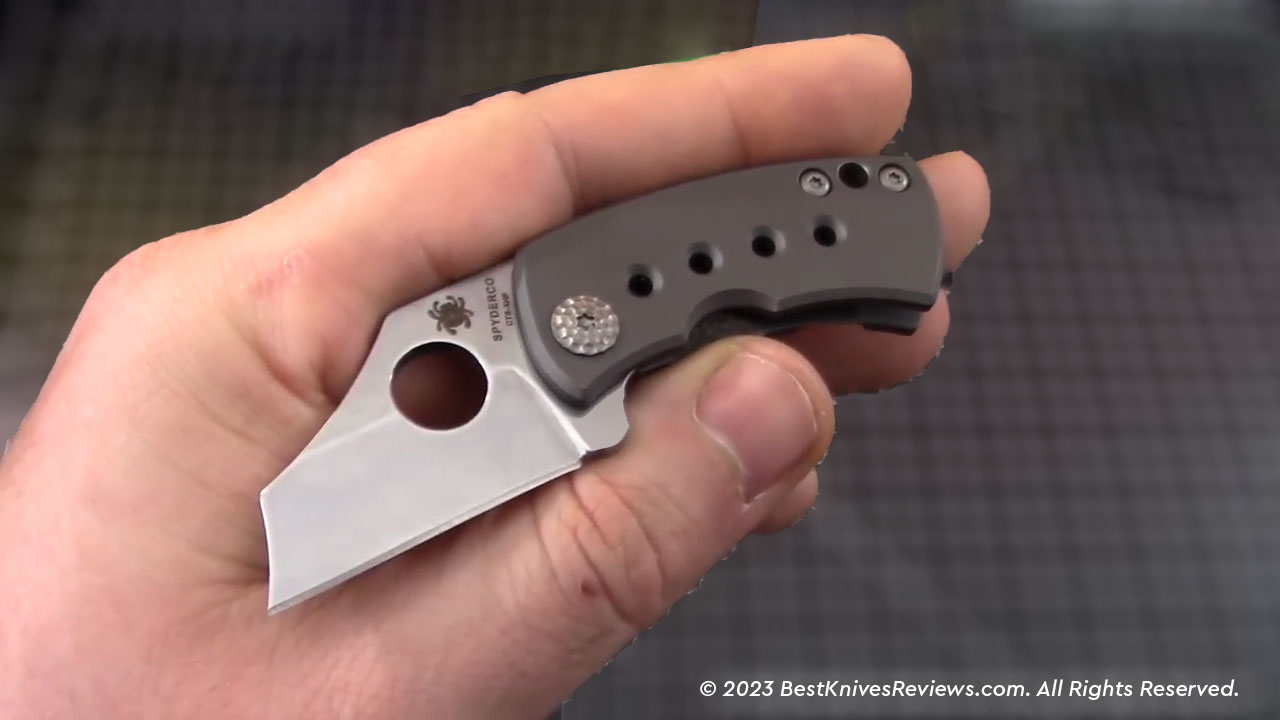
Despite the handle material being a metal, it is warm to touch. That makes it feasible to use outside where whether can get unpredictable. However, its texture and grip is not ideal. You may have to struggle to attain the right grip to use it. However, the ergonomics of the handle cover this drawback. Spyderco and McNees put their heads together to round the spine curves to the butt of the knife. The two large finger grooves on the belly of the handle and the four holes down the middle helps add the texture for a better grip. It is accompanied by a lanyard hole large enough to fit any lanyard
Pocket Clip of Spyderco McBee
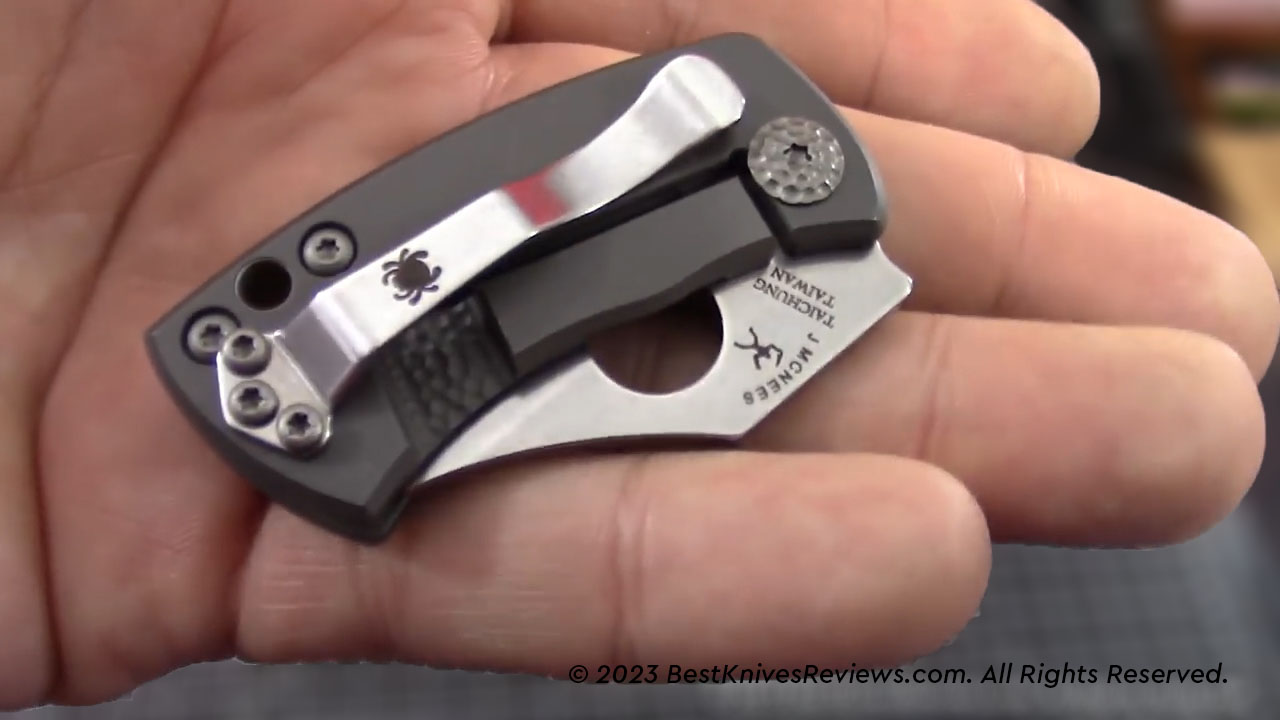
As you can see, the pocket clip of Spyderco McBee spans its entire frame to make it easy to carry or hang on to the pocket or shirt clip. However, it has limitations – it is only designed for tip-up carry on the traditional side of the knife, the right side. That means it is not ambidextrous with 4-position carry.
The pocket clip has a satin finish, giving it a sleek look. However, it is more prone to tarnishing unlike the matte black finish. But the matte gray bolts hold the clip and the hardware together.
Pocket clip rating: 4/5
Deployment & Locking Mechanism of Spyderco McBee
The McBee features Spyderco’s trademark Round Hole, accompanied by the frame lock, also called the Reeve Integral Lock (R.I.L). It was the invention of Chris Reeve, who is also a custom knife manufacturer. It was first used in 1990 in Sebenza knife, and has been upgraded many times since.
The R.I.L lockup is similar to the liner lock, but more direct and durable. Once opened, it remains open and does not allow any blade play. That makes the locking mechanism safe to operate. However, the frame of this lock is thinner and takes up the entire handle. The raised cutout that rests on the axis of the spine creates an inward pressure when opening it.
When closing the blade, it requires some amount of pressure to disengage it and removes contact with the butt of the blade. The R.I.L lockup is suitable for the McBee, considering its strength and thickness. It will not close up while performing a task.
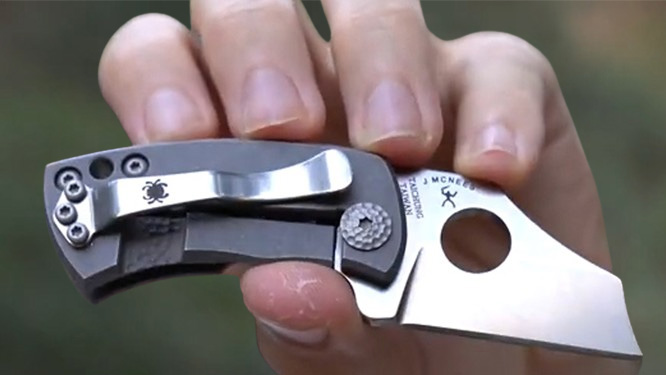
My Experience with Spyderco McBee
I used Spyderco McBee as a secondary knife whenever I go out. And it surprised me because it worked just as well as my primary mid-tier pocket knives. It was also surprising because I hadn’t carried such a small knife before. McBee only covers 2 or maximum 3 fingers. Spyderco Dragonfly and Para 3 are bigger than McBee, but still small, but not as small as McBee.
This is how the McBee looked like after considerable usage. There was some tarnishing on the handle, although not visible in the images. It pretty much retained its image, and still good to go for a long time.

Its size did not compromise its functionality. I was able to carry out EDC tasks like opening packing, cutting through sheets of paper, cutting zip ties, laces, ropes, and even pipes with ease. It also cut fruits and herbs better than a larger knife. I found it very useful in food preparation, and it was able to cut fruits. When harvesting herbs, using this knife proved to be of sublime importance. Since herbs are delicate, and require precise cuts, McBee was able to stand up to the task.
Overall, I found McBee to be useful for tasks around the house, in the office, or if you go outside. So it’s a pretty valuable instrument for anyone who requires a handy knife for such EDC tasks.
ComparisonSpyderco McBee Vs Spyderco Pochi
Spyderco Pochi and McBee share many elements and specs. For example, both are really small knives, although Pochi is only slightly bigger. Both the knives are made in Taiwan, share the same R.I.L locking mechanism, have Titanium handles, and have Right Tip-Up carry position.
However, if you look closely, the design of both the knives is different. Spyderco McBee has a Wharncliffe blade shape, the Pochi’s blade shape is dog. The pocket clip on Pochi is also very different from McBee. However, it functions the same way as McBee, and you can get replacement second market pocket clip for it too.
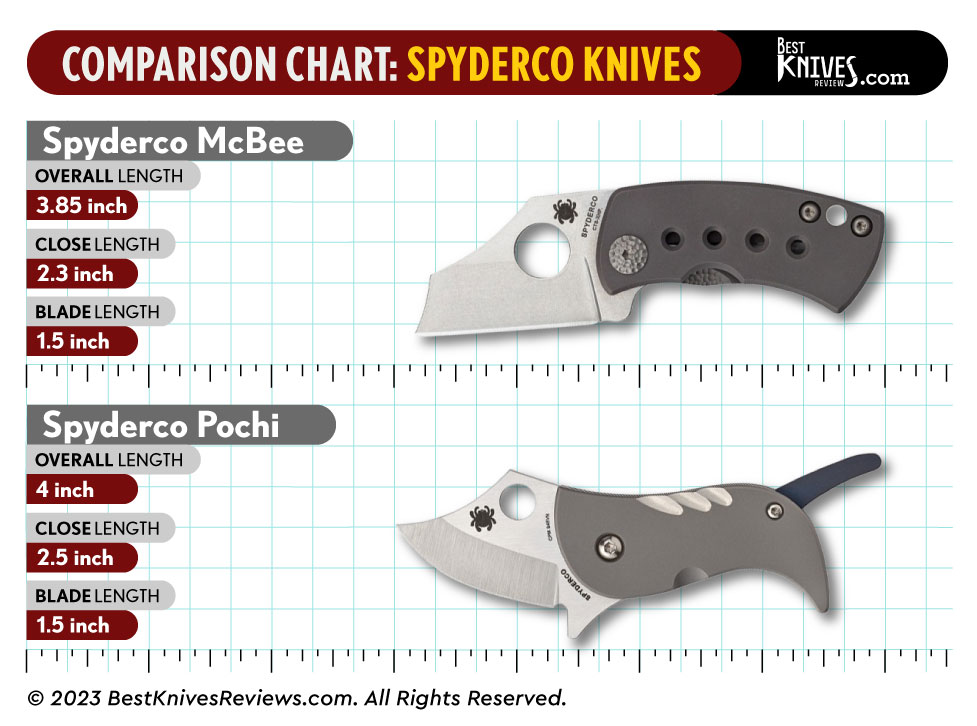
There is a considerable price difference between the two knives. While the official cost of McBee is $250, Pochi costs $330. The main reason for this is that Pochi uses superior blade steel component, CPM S45VN, and has a super extravagant design, driving up the production cost.
The McBee knife however, is more practical and capable of performing EDC tasks. The Pochi could take some getting used to because of its unique design.
Spyderco Pochi Prices |
||
|---|---|---|
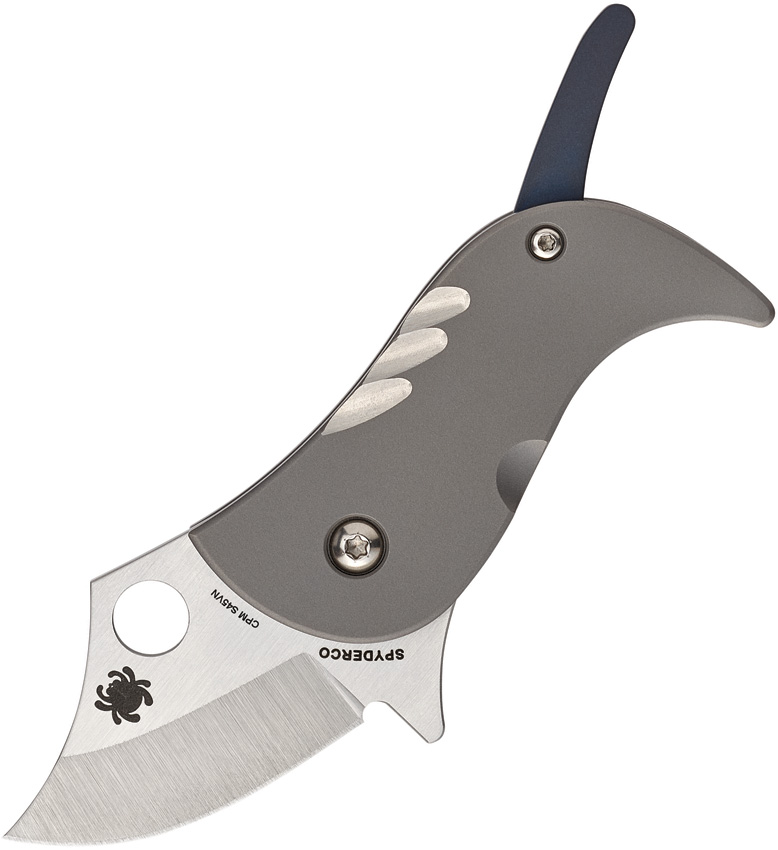 |
 |
Check Price at Blade HQ |
 |
Check Price at Chicago Knife Works | |
Concluding Thoughts on Spydero McBee Review
Spyderco McBee review shows that size is not what matters the most when it comes to EDC folder knives. The material of the knife’s blade and handle suggested that it is good for common household and office EDC tasks without any worries. Its relatively high end knife as it costs around $175 in US at the lowest price. If someone wants to buy, you can have it in a deal where you can also get 2 free gift items + free shipping on purchasing Spyderco McBee knife.
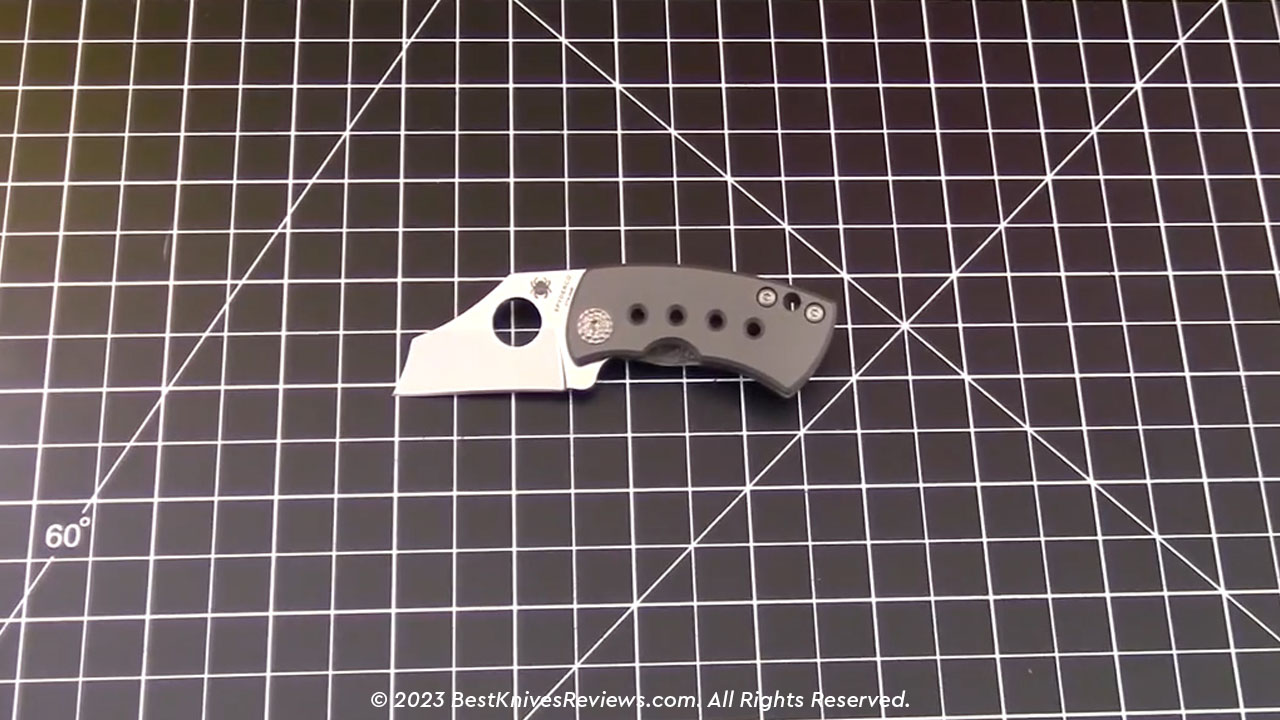
It is also available in second market pocket clips and handle finishing if you want to customize it a bit. Other than that, it is only one of a kind without any variants. The closest knife to McBee by Spyderco is Pochi. However, its design is different than McBee, but is similar in size, titanium scales, and country of origin.
We found Spyderco McBee as a good everyday carry knife, and anyone can use it. Although, it may take some getting used to.
Pros & Cons of Spyderco McBee
